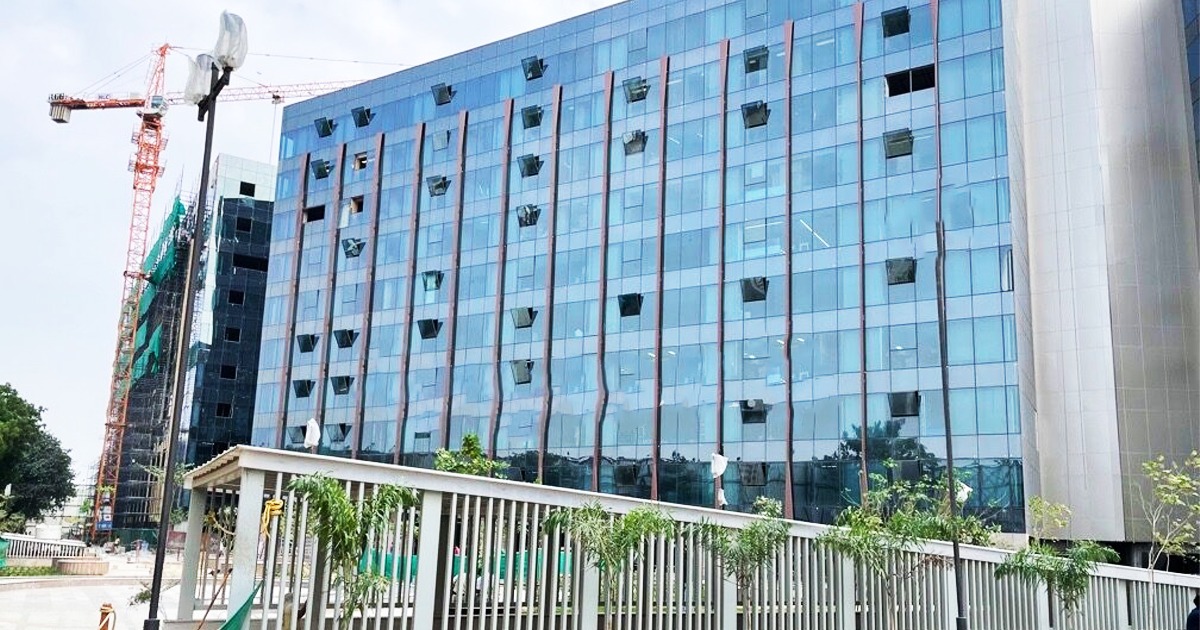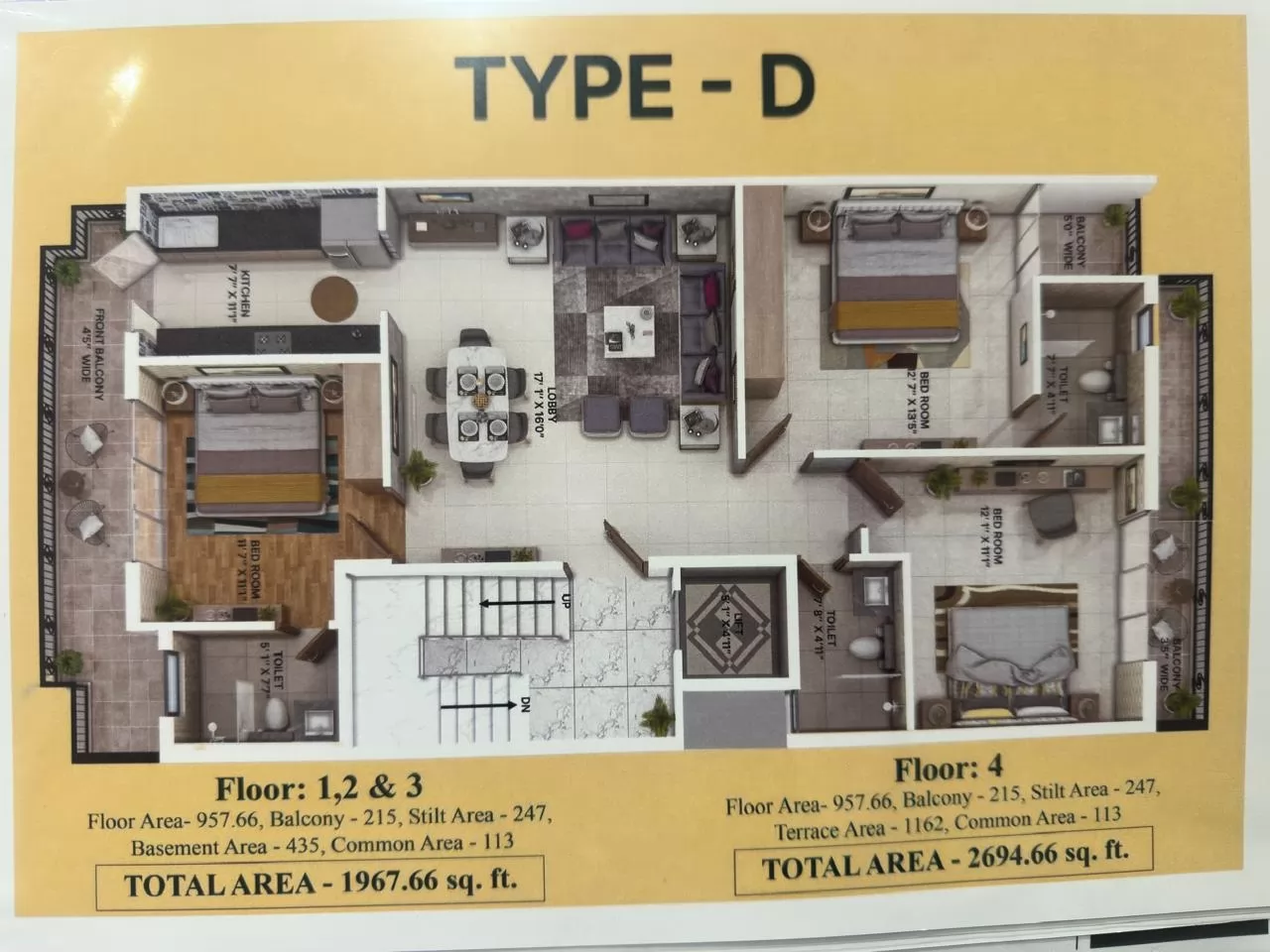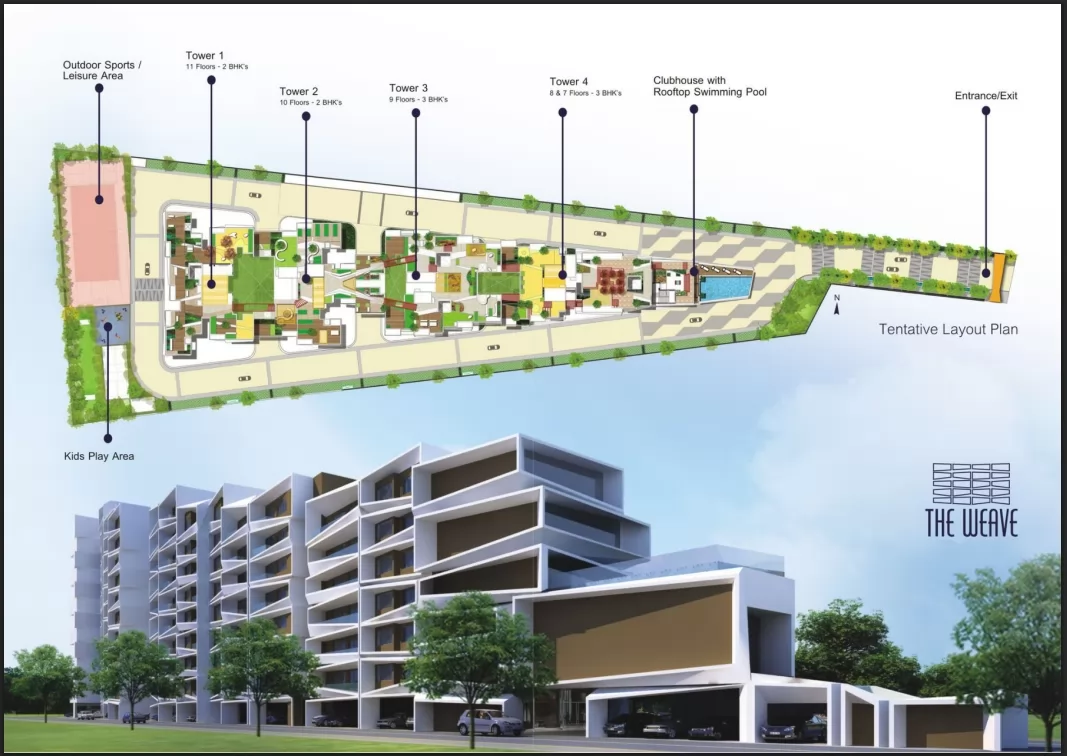The World Trade Center in Delhi will soon be open for business, with 4 of the 12 buildings ready for occupancy
By Bricksnwall | 2024-03-11

The World Trade Center Association (WTCA) of New York granted the project a license. Its 3.4 million square feet of commercial space The last few weeks have seen the gradual removal of metallic sheets that for nearly three years have covered a massive construction site at Nauroji Nagar in south Delhi. This has given us our first look at the sparkling glass façade of twelve newly constructed 10-story towers, which will serve as the nation's first World Trade Center (WTC).
The roughly 600 residential quarters that housed government employees for nearly 50 years have been replaced by the 25-acre site. Sarojini Nagar, Nauroji Nagar, Kasturba Nagar, Netaji Nagar, Srinivaspuri, Mohammadpur, and Thyagraj Nagar are the other seven general pool residential accommodation (GPRA) colonies in the city, all of which have undergone development.
The World Trade Center Association (WTCA) of New
York has granted the project a license. The project's 3.4 million square feet
of commercial space is for sale, and the majority of the money needed to
reconstruct the seven GPRA colonies is raised here.
Four of the twelve buildings are currently prepared for occupants. An official from NBCC, a public sector venture under the Union Ministry of housing and Urban Affairs (MoHUA) that is building the property, stated on condition of anonymity that two central government ministries have already begun operating out of the complex.
The goal, according to senior NBCC officials, is to
finish building the WTC and selling commercial space by the end of the current
fiscal year. Approximately 80% of the space has already been sold, with some of
the successful bidders including HDFC, GAIL, Petronet LNG, and Oil India.
The official cited above stated, "WTC's accreditation has raised its marketability, and hence, we are confident of finishing the entire sale by the end of the month." The official also mentioned how convenient the location is to the airport, the Central Secretariat, the Hazrat Nizamuddin railway station, Bhikaji Cama Place, and the Yellow and Pink lines of the Delhi Metro.
The implications of the new WTC for Delhi-NCR
Currently, the WTCA boasts member properties throughout over 90 nations. The
first Indian city to establish a WTC was Mumbai; today, over thirty Indian
towns, including two in the National Capital Region (Noida and Gurugram), have
similar complexes.
Following the WTCA's September 2017 license award
to NBCC, the foundation stone was placed in May 2018.
The main users of this space will be government agencies, public sector projects, and private companies. There will also be a three-story underground parking facility with space for 8,000 automobiles, as well as a landscaped retail, food, and beverage plaza with terrace gardens.
A four-story school building will also be donated
to the community as a component of social infrastructure.
WTC is a "notable development," according to real estate analysts because it provides a sizable floor area for businesses in the center of south Delhi. Over the past ten years, many private enterprises looking for similar office spaces have chosen Gurugram and Noida over the nation's capital. According to G Hari Babu, national president of the National Real Estate Development Council (NAREDCO), "this project is an option worth considering for businesses in search of accessible office spaces" because of its strategic location with frontage on Ring Road, power backup, green design principles, and ample parking solutions.
Delhi has always been a supply crunch market
from a commercial office availability point of view, and this is after a long
time that a large floor office is available due to this project, stated
Vibhor Jain, managing director at Cushman and Wakefield.
Although the site by itself cannot ensure the project's success, he said a WTC with the ideal combination of amenities is a desirable destination in and of itself. He claimed that the current Ansal Plaza and Bhikaji Cama complex, which are close to the project, lack the necessary contemporary amenities like power backup, centralized parking, and community care and are therefore unsuitable for drawing in high-end customers.
How Ring Road traffic will be impacted by the
project
WTC is situated directly on Ring Road, a busy thoroughfare that links several traffic hotspots, including DND-Ashram, Lajpat Nagar, South Extension, Moti Bagh, Dhaula Kuan, Rajouri Garden, and Punjabi Bagh. It is also near two of the biggest hospitals in the Capital, Safdarjung Hospital and AIIMS.
The Delhi High Court postponed the WTC project for two years in August 2018 because to environmental issues, especially worries over the area's traffic patterns. After the court was pleased with the departments' no-objection certificates and the government agencies' promised compensatory afforestation, the stay was eventually lifted in February 2020.
Nonetheless, considering the scope of the project,
analysts believe that an increase in traffic volume on Ring Road is inevitable.
It may be necessary to enhance the capacity
of traffic to execute U-turns beneath the Bhikaji Cama flyover, stated
Sewa Ram, the head of the School of Planning and Architecture's transport and
planning department.
Former director of planning for UTTIPEC, the top traffic and transportation body in Delhi, Ashok Bhattacharjee, suggested that the authorities make sure there is adequate pedestrian access to the WTC campus and look into ways to make it easier for office workers to use public transportation like the Metro and buses.
Additionally, the INA market on Aurobindo Marg will be connected to the Mahipalpur underpass by a 14-kilometer elevated corridor that will be constructed by MoHUA, subordinate ministries, and the Delhi Development Authority. This would provide an alternate route to and from the airport. This should help with some of the traffic issues, according to Sewa Ram.
Safety and environmentally friendly aspects
With 100% predictive maintenance for all mechanical
and electrical systems, the WTC project features an integrated building
management system. All services are managed and overseen by facility operators
via a single screen. Radio-frequency-controlled smart tags for residents, which
will be used for parking, boom barriers, and elevators, will be used to manage
access to the site and buildings.
In the event of an emergency, light poles throughout the campus will also serve as WiFi hotspots and public speaker systems. There will be state-of-the-art fire detection and response systems around campus. In the event of a fire, 10% of the windows will automatically open to allow for smoke extraction, and emergency exit signage and lighting will turn on immediately. The lobby and elevators will have smoke extraction systems.
Source:
Hindustan Time




